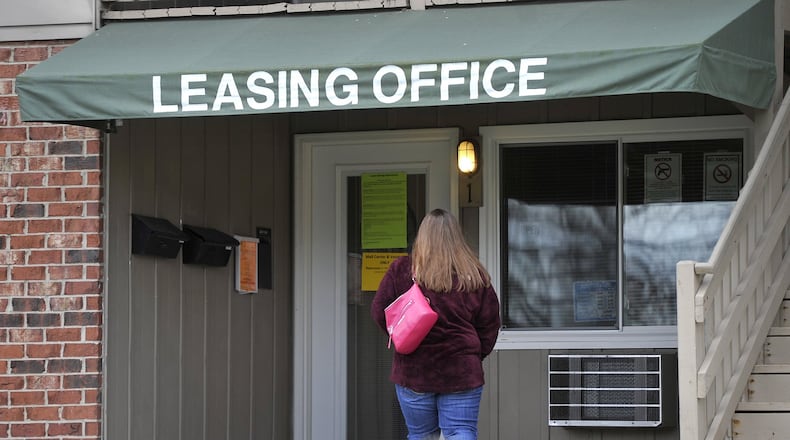“It is really putting a lot of families and a lot of individuals in very difficult situations,” said Amy Riegel, executive director of the Coalition on Homelessness and Housing in Ohio.
While the average rent increase of 5.7% in the core Dayton region is slightly above the national average increase of 4.8%, data from Construction Coverage, an online publisher of construction industry research reports, showed rents increasing 7.8% to 10.1% in Butler County, depending on the size of the apartment.
For Clark County, rents were estimated to increase between 11.2% to 15.8%.
Construction Coverage used data from the U.S. Department of Housing and Urban Development and the U.S. Census Bureau’s American Community Survey. Specifically, researchers at Construction Coverage ranked locations by the percentage change in median rent from 2024 to 2025.
An analysis by this news organization of HUD’s fair market rent pricing showed similar trends, with an even higher increase for renters of four-bedroom homes in Springfield, rising by 16.5%.
For low-income families, rising rent prices can eat into other parts of their budget, anywhere from food and medication to items for cleaning and general hygiene.
“There’s a old adage that is, ‘The rent eats first,’” Riegel said.
In some cases, people are spending more than 50% of their income on rent, leading those households to make tough decisions.
“Even buying a tube of toothpaste or buying cleaning supplies ― even the most inexpensive cleaning supplies ― these can’t even be considered by these families because they’re such extravagant purchases,” Riegel said.
Last year, Dayton’s rents rose by 5%, so this year’s increase represents a modest acceleration. Among midsize metro areas, Dayton falls somewhere in the middle.
Increasing rents are coming at a time where the rising costs of goods and services are hitting the property owners and managers, apartment owners say.
“We understand that rental increases are a concern for many renters. It is important to recognize the broader economic factors are driving these increases,” said Barbara Hargraves, board president of the Greater Dayton Apartment Association.
Property insurance rates have surged, she said, including some rates going up between 10% to 30%. Property tax increases add another layer of financial pressure on property owners, as well as mortgage costs.
“Maintenance and repair costs have also risen due to material costs, and payroll expenses continue to climb in response to labor market pressures,” Hargraves said.
Despite the rent increases, the Dayton and Springfield regions are some of the more affordable housing options in the Midwest.
“The key challenge is ensuring a balance between affordability and the financial realities of maintaining rental housing. Open communication between renters and property managers is essential,” Hargraves said.
Rental assistance following the COVID-19 pandemic has mostly dried up, but resources are available for financial counseling and assistance with paying for utilities. Utility assistance can be found through the Ohio Public Utilities Commission by visiting its website at puco.ohio.gov or calling the PUCO Call Center at (800) 686-7826.
The Miami Valley Community Action Partnership can provide free counseling for those that need assistance with credit repair, budgeting, foreclosure prevention, and more. People can call 937-341-5000 or visit miamivalleycap.org.
About the Author

